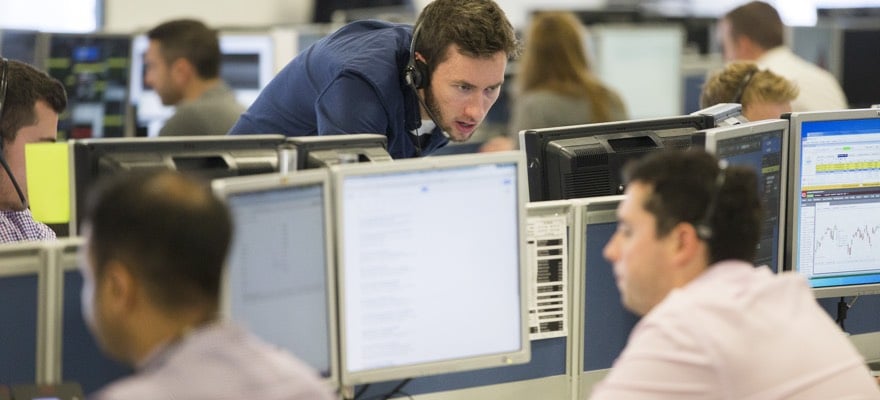Six months after leaving his role at FxPro, Conor O’Driscoll announced last month that he would be joining technology provider Devexperts. Formerly the deputy chief executive officer at the retail broker, it was an unusual, but not unheard of, step to take.
The reason for this is that most broker executives tend to hop from one trading company to another. Up until March of this year, that was what O’Driscoll had done too.
After finishing university, he spent time at retail broker Pan Index, prime of prime broker Baxter Financial services and - finally - FxPro, where, until September of last year, he spent six years.
To find out why he made the switch to a technology firm, we spoke to O’Driscoll last week. In a brief interview, we covered new technology, regulations and how - one day - virtual reality could be used to trade the financial markets.
In your career thus far, you’ve really only worked on the brokerage side of things, why the move into technology providing?
I have always been very intrigued by the technology side of the industry and was heavily involved in a number of in-house developments with FxPro over the years, such as the development of the Quotix Bridge and aggregation engine. So when the opportunity to work for an innovative company such as Devexperts arose, I thought it was the ideal time to make the change.
You are working now as VP of Devexperts’ OTC Platform - what does that actually mean you will be doing?
As VP of OTC Platform, my primary responsibilities will be to drive the development roadmap and growth plans for the dxTrade product suite. The dxTrade platform has been the foundation for many of our successful developments, allowing us to deliver platforms for both institutional and retail clients across a wide variety of asset classes. I am looking forward to continuing this development to deliver a great platform for the market.
How do you see your past experience aiding you in your new role?
Having worked solely on the brokerage side of the industry in my career thus far, I have gained a comprehensive understanding of brokers’ exact requirements, and in turn, the pitfalls that brokers can experience when operating or adopting a new Trading Platform .
Having worked in dealing desk environments and on in-house projects, I am quite familiar with the technical problems that may arise while serving mass end-users and I hope to bring this knowledge to the development process with Devexperts, to better address the needs and pain points of our B2B clients.
It’s been almost a year since ESMA introduced its product intervention measures, how do you think they have affected the industry thus far?
I think it has caused a monumental shift in the industry as brokers have looked for ways to adapt to the new measures.
While we can only speculate on results for the entire industry, recent announcements from the publicly listed brokers have shown that the negative impacts from the restrictions are clearly being felt in some quarters.
I believe that in the long term the industry will continue to develop, with the measures pushing brokers to find more innovative ways to try and capture market share.
Have there been any knock-on effects, as a result of the regulations, for technology providers like Devexperts or is it business as usual?
For Devexperts it is very much business as usual, one benefit in our being a technology provider is that we are not tied to nor reliant on any one particular region or sector.
As a company, our client base ranges from CFD brokers to stock brokers and asset managers.
I do feel we may see an increase in the number of CFD brokers looking to Devexperts for custom-built platforms in the future, as they search for ways to differentiate themselves in a highly competitive market.
It seems like there is increasing demand from retail traders for equities and DMA. Is that something you see and does that present any new challenges for a company like Devexperts
I think there is undoubtedly an interest in the market for equities and DMA, though I do not believe that it poses any additional challenges for ourselves.
We have recently built a platform with DMA for Gedik Securities in Turkey. It offers the ability to trade equities, futures, options, and warrants on the Borsa Istanbul.
Another of our clients, operating in the US, offers trading stocks, futures, and listed stock options on multiple US exchanges. All of these platforms have utilized dxTrade as their foundation, so providing DMA technology is well within our capabilities.
Your Devexa ChatBot has created some buzz in the industry. Can you talk a bit about how that was developed and any tangible benefits that it has created for brokers using it?
We started it as a sandbox project, and it turned out that we started it at precisely the right time.
After we introduced the MVP to the audience, we immediately had several requests to test it, and it didn’t take long for the first client to sign up. By now we have added support for eight popular languages, connected the chatbot with FX news providers from several geographical regions, and we are currently working on improving the admin cabinet.
Most tend to think that automated support that reduces the load on the help desk is the limit of chatbots. But the real benefit lies in the API and integration with brokers' marketing software, making it possible to broadcast messages with a call to action to all users, or to a selected group of users, who for example were interested in trading cable at a specific rate.
Such communication helps create more conversions, personalizes the sales approaches, and aids in predicting market sentiment.
You also have an AR offering. To be blunt, this seems like a bit of a gimmick at the moment. In the long run, however, such technology could be extremely useful - can you provide some thoughts on what it could be used for in the future and, if possible, ways it’s being used now?
This development is part of our future thinking for our clients who will soon be targeting younger generations: such as millennials or Gen Z. The competition among brokers continues to increase, and such technologies help to attract client attention.
Another area of application is for analysts and the buy-side, who work with a great deal of data and who may need to consider several data streams at any given moment. AR technology will aid this process through the visualization of the data. Of course, such case scenarios are in the long run, as the current applications are somewhat limited, primarily due to the size of the AR headsets.
We are looking forward to future hardware updates from the tech giants which will allow us to continue our experiments and to continue having fun with AR.

















